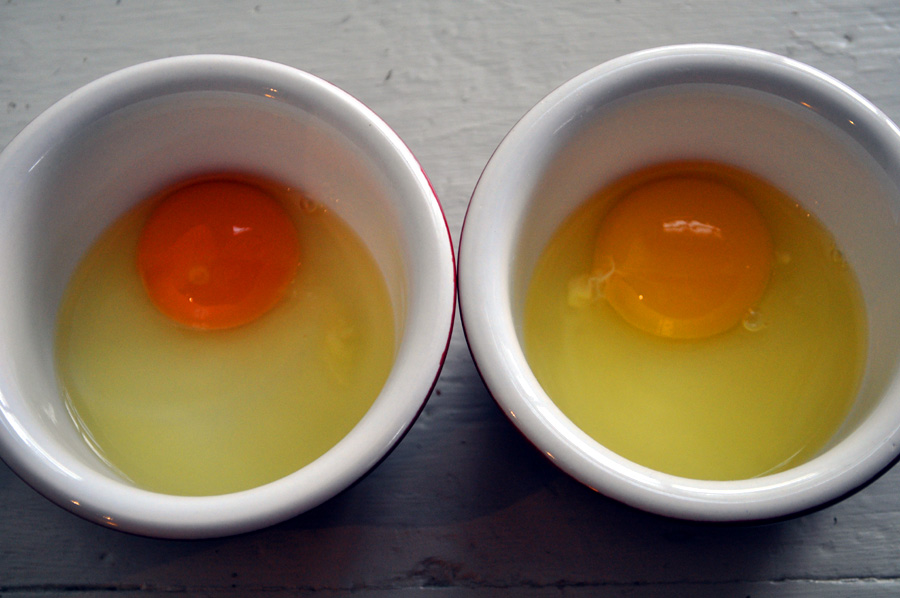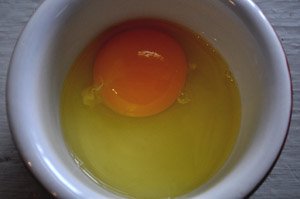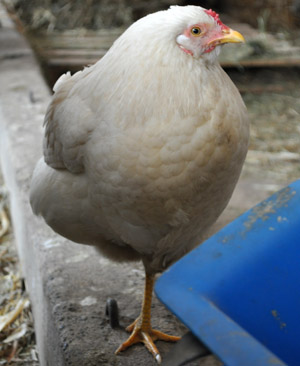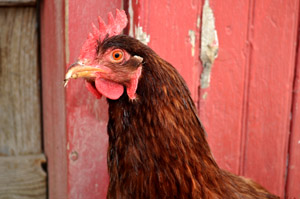Posted by · Leave a Comment
In the local elementary school, fourth grade students hatch chicks as part of the science curriculum—learning about the daily development of a chicken egg along with way. Egg customers of ours will occasionally ask about eggs so I thought I’d include a few of the answers to the frequently asked questions (I stay refreshed because both my children have hatched chicks in class in recent years—plus, I can always ask them!)
Are all eggs fertilized?
Nope. Only if a rooster has been in the “company” of a hen. Usually, one rooster can “service” approximately ten or so hens. Roosters are necessary only if you wish to hatch chicks (of course, they’re also beautiful to have around).
You mean a hen will lay an egg that’s unfertilized?
Yep. In fact, that’s how it happens in, I’d say, most of the commercial egg “battery cages.” See our egg in the dish on the left? Note the blastoderm. That’s the little concentric circle in the yolk. It’s indicative of a fertilized egg. The egg on the right is one I purchased from the grocery store (hadn’t done that in years).

Why are the yolks from your chickens so orange-ish?
We feed our chickens “feed corn” purchased from a local farmer and supplement with “layer” feed. They are free-rangers (given access to come and go as they please) and are outdoors from sun-up to sunset. I say: orange-yellow yolk equals happy hen.
What are the white squiggly things attached to the yolks?
 The chalazae are on either side of the yolk, stretched tightly, to anchor the yolk to the shell. They recoil against the yolk and “squiggle” when the shell is broken. There is no harm in eating the chalazae.
The chalazae are on either side of the yolk, stretched tightly, to anchor the yolk to the shell. They recoil against the yolk and “squiggle” when the shell is broken. There is no harm in eating the chalazae.
Are brown eggs better for you?
Unfortunately, I just read that some white shells are dyed brown (news to me?!) because consumers believe the brown shell means a healthier egg. I can’t find any evidence to support this. I will tell you a chicken with white lobes (they look like earlobes—if chickens had ears) will lay white eggs and a chicken with red lobes will lay brown eggs. There are a few exceptions to this. The most noteworthy is the green-blue egg laying Auracana (but that’s another blog post, altogether).


According to Storey’s Guide To Raising Chickens, “sperm of a fertilized egg contributes an insignificant amount of nutrients to a fertilized egg” and “shell color has nothing to do with an egg’s nutritional content.”



Comments